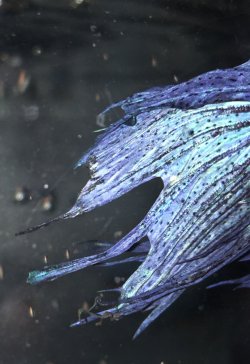I'm afraid my fish, John Quincy Adams, is sick! He had a white spot on his fin when I first got him 9 months ago but it did not grow or change so I left it alone.
I've begun to notice that his tail looks like it might be deteriorating and some of his dark blue color is lightening.
He has always been a feisty boy but he does like to hide and nap inside/around his tank ornaments regularly. He still eats but he stays at the top of his tank mostly.
He is in a 10 gallon tank with 3 snails and one plant. I clean it via partial water replacement as needed and change the filters routinely. I always treat the water with conditioner and I've even used a "tank cleaning kit" that had some salt and cleansing tablets in it.
John Quincy Adams is my first fish and I am very concerned!
I've begun to notice that his tail looks like it might be deteriorating and some of his dark blue color is lightening.
He has always been a feisty boy but he does like to hide and nap inside/around his tank ornaments regularly. He still eats but he stays at the top of his tank mostly.
He is in a 10 gallon tank with 3 snails and one plant. I clean it via partial water replacement as needed and change the filters routinely. I always treat the water with conditioner and I've even used a "tank cleaning kit" that had some salt and cleansing tablets in it.
John Quincy Adams is my first fish and I am very concerned!





